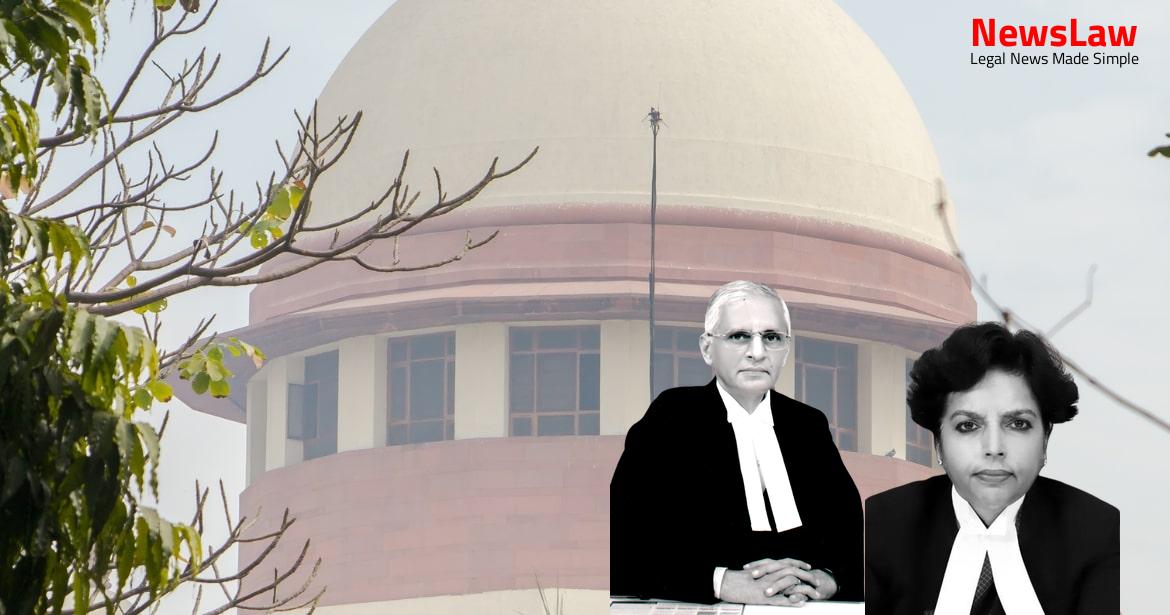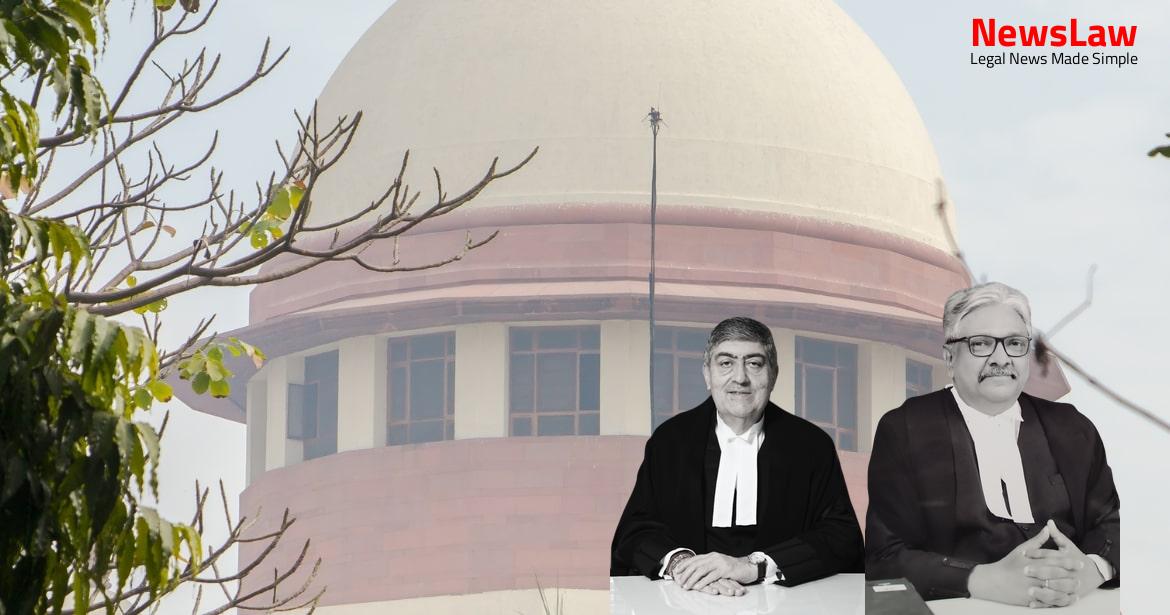Delve into a detailed legal analysis of a recent court decision that scrutinizes the offense classification and the application of Exception to Section 300 IPC. The court’s interpretation and evaluation of the circumstances surrounding the case shed light on the critical distinctions between culpable homicide and murder, emphasizing the importance of factual evidence in determining the nature of the offense.
Facts
- The accused felt aggrieved by the judgment and order of conviction in the trial court sentencing him to life imprisonment.
- The accused filed Criminal Appeal No. 110/2016 before the High Court challenging the verdict.
- The High Court altered the finding from murder to culpable homicide not amounting to murder and reduced the sentence to ten years rigorous imprisonment.
- The State of Uttarakhand appealed against the High Court’s decision, disagreeing with the classification of the crime as not amounting to murder.
- The High Court based its decision on the sudden fight in the heat of passion between the parties and the use of a rough piece of wood as the weapon.
- The trial court had initially convicted the accused for murder under Section 302 IPC due to the nature of the injuries sustained by the deceased.
- Accused ran after deceased with ‘Phakadiyat’ in hand during Mehendi Ceremony celebrations.
- The complainant, wife of deceased, tried to rescue her husband but failed.
- Investigating Officer recorded statements of eye witnesses, including the complainant.
- Medical evidence, including post mortem report, was collected during investigation.
- Intervention of villagers halted further progress in the matter.
- Deceased sustained multiple injuries on the head, resulting in skull fracture and frontal wound.
- After a few days, the deceased passed away on 5.12.2014.
- Accused was charged under Section 302 IPC for the murder of Virendra Singh.
- The prosecution examined a total of 14 witnesses to support the case against the accused.
Also Read: Ruling on Circumstantial Evidence in Murder Case
Arguments
- The main incident of having beaten the deceased was subsequent to the first incident of altercation in the mehendi ceremony.
- The incident did not occur due to a sudden fight in the heat of passion upon a sudden quarrel in the mehendi ceremony.
- The High Court did not properly appreciate that the first altercation was halted by villagers, but the accused later attacked the deceased at night with a weapon and continued to give several blows.
- The State argues that the High Court erred in holding that the murder does not amount to culpable homicide.
- It is argued that the High Court wrongly applied the Fourth exception to Section 300 IPC, as there was no premeditation and the murder was a result of a sudden fight.
- The choice of weapon (Phakadiyat) does not diminish the gravity of the crime, considering the repetitive blows to the vital body part and multiple injuries leading to death.
- Respondent’s counsel argues that the High Court provided cogent reasons for invoking the Fourth exception to Section 300 IPC.
- The counsel supports the High Court’s decision that the culpable homicide does not amount to murder in this case.
- The weapon used by the accused, a ‘Phakadiyat,’ was considered in determining the nature of the offense.
Also Read: Challenging Legal Presumptions in Negotiable Instrument Cases
Analysis
- The case involves a fight resulting in the death of one Virendra Singh.
- The accused inflicted severe injuries on the deceased, including skull fractures, brain lacerations, and contused wounds on the leg.
- The medical evidence points to the severity of the injuries sustained by the deceased.
- The court discusses the application of Exception 4 to Section 300 IPC, which requires no premeditation, a sudden fight, no undue advantage taken, and the fight being with the person killed.
- The court emphasizes the importance of proving all the components of Exception 4 to apply it in a case.
- The court differentiates between sudden quarrels and intentional acts of causing harm, indicating that the intention to cause injury is a crucial factor.
- The court scrutinizes the actions of both parties in the fight to determine guilt and responsibility.
- The court notes that the intention to inflict the injury and the seriousness of the injury are separate considerations in determining the offense.
- The court highlights the distinction between cases of murder and culpable homicide not amounting to murder, ensuring the appropriate classification of offenses.
- The court concludes that the actions of the accused do not align with the criteria of the fourth exception to Section 300 IPC.
- The court criticizes the High Court’s assessment of the incident and injury severity, suggesting an opposite conclusion regarding the classification of the offense.
- The court emphasizes that the intention to inflict a specific injury is a factual consideration, not a legal one.
- The accused intentionally chose a vital part of the body, the head, for causing multiple fractures of the skull, demonstrating the force used with the weapon.
- The cumulative effect of the chosen weapon and the severity of the injuries irresistibly lead to the conclusion that the appellant intended to cause the death of the deceased.
- The case falls under Clauses Thirdly and/or Fourthly to Section 300 IPC due to the choice of weapon and the nature of the inflicted injuries.
- Several previous decisions of the court were referred to, emphasizing that the intention to cause death can be inferred from factors such as the weapon used, force employed, choice of body part, and the nature of the injuries caused.
- Exception 4 of Section 300 IPC was discussed in relation to acts done in a sudden fight, requiring absence of premeditation, heat of passion, and avoidance of undue advantage or acting in a cruel or unusual manner.
- Intention to cause death can be inferred from various circumstances
- Circumstances include nature of weapon used, location of injury, force employed, presence of provocation, etc.
- List of circumstances is not exhaustive and may vary in individual cases
- Specifically, intention to cause death is present if bodily injury intended is sufficient to cause death or if the act is imminently dangerous
- The High Court made a grave error by not considering culpable homicide as murder.
- Exception Fourth to Section 300 IPC should not have been applied by the High Court.
- The second incident occurred much later after the initial altercation, making the application of exception Fourth inappropriate.
- The judgment of the High Court is unsustainable based on both facts and law.
Also Read: Legal Analysis Critique in High Court’s Quashing Order
Decision
- The present appeal is allowed.
- The impugned judgment and order passed by the High Court altering finding of murder to one of culpable homicide not amounting to murder and consequently converting the sentence from life imprisonment to ten years rigorous imprisonment is quashed and set aside.
- The respondent-accused is held guilty for the offence under Section 302 IPC for killing and/or committing the murder of the deceased Virendra Singh.
- The accused is sentenced to undergo life imprisonment.
- The judgment and order passed by the trial Court is restored, convicting the accused for the offence under Section 302 IPC and sentencing him to life imprisonment.
Case Title: THE STATE OF UTTARAKHAND Vs. SACHENDRA SINGH RAWAT (2022 INSC 153)
Case Number: Crl.A. No.-000143-000143 / 2022



